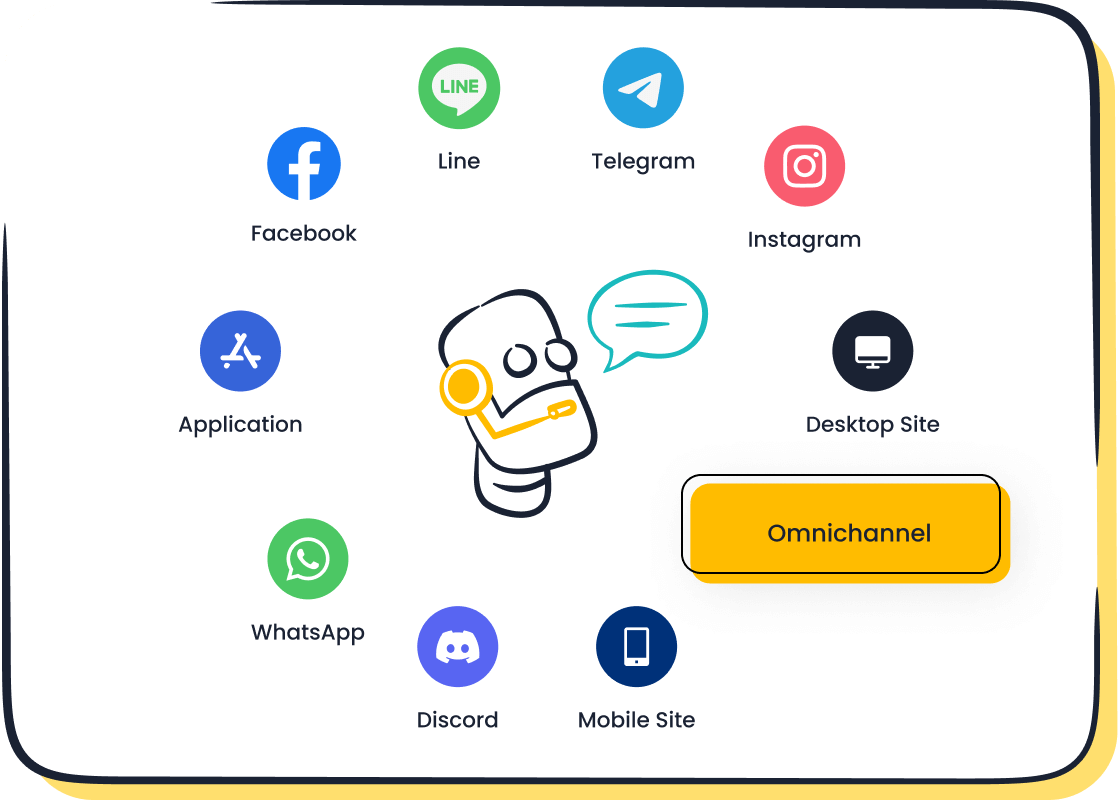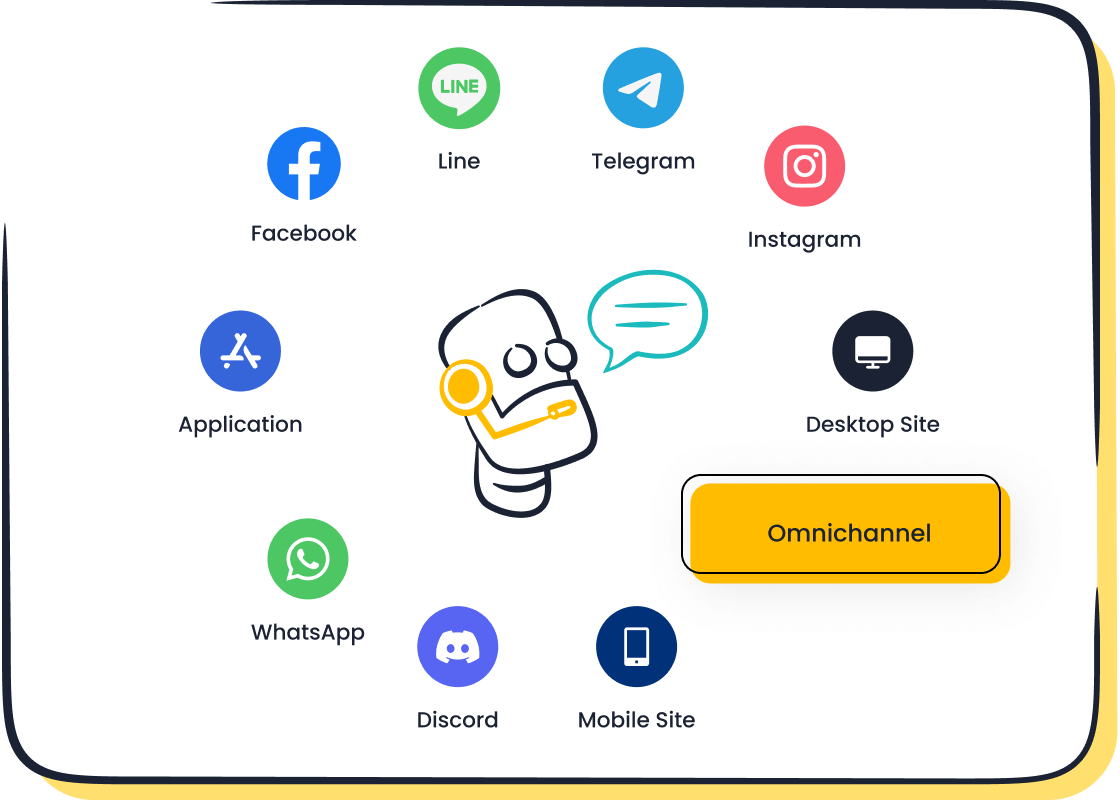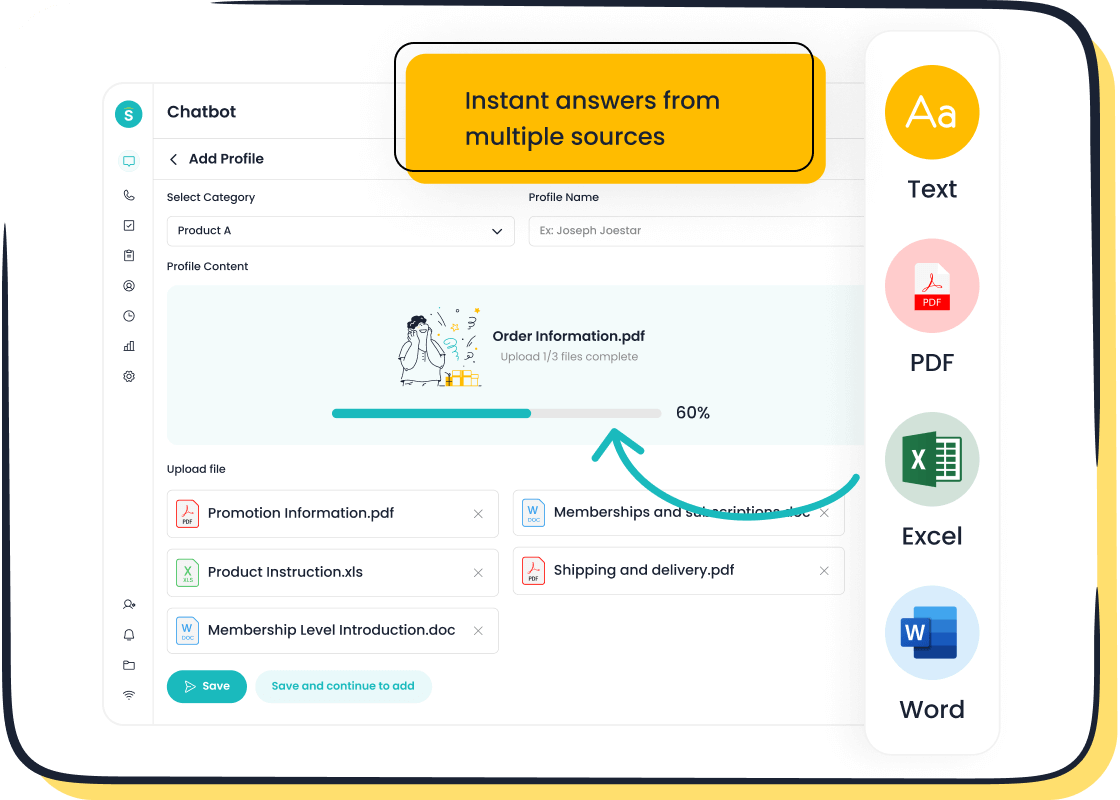2025 Guide to Choosing AI Tools for Customer Support

AI is reshaping customer support in 2025, making it faster and more personalized. Did you know 95% of customer interactions will rely on AI by then? Tools like Sobot help businesses handle more inquiries efficiently, boosting satisfaction. Choosing the right customer care AI tools ensures you stay ahead in this competitive landscape.
Identifying Business Needs for Customer Care AI Tools
Define Objectives for Customer Support
Before diving into AI tools, you need to set clear goals for your customer support. What do you want to achieve? Maybe you’re looking to reduce response times or improve customer satisfaction. Metrics like process efficiency, error reduction, and faster response times can guide your decisions. For example:
| Metric | Description |
|---|---|
| Efficiency gains | Streamlines processes, saving time and effort. |
| Error reduction | Minimizes mistakes during customer interactions. |
| Response times | Tracks how quickly your team resolves customer inquiries. |
| Customer satisfaction | Measures how happy customers are with your service. |
By focusing on these measurable objectives, you’ll know exactly how AI tools can improve your operations.
Analyze Customer Interaction Channels
Your customers interact with you in many ways—email, live chat, social media, or even WhatsApp. To choose the right customer care AI tools, you need to understand these channels. AI systems can analyze interactions across platforms, helping you identify gaps in customer expectations. For instance:
- How quickly are issues resolved on each channel?
- Are customers satisfied with the responses they receive?
- Does your team understand customer intent and emotions?

AI tools like Sobot’s chatbot excel here. They offer omnichannel support, integrating seamlessly with platforms like WhatsApp and SMS. This ensures consistent service quality, no matter where your customers reach out.
| Metric | Description |
|---|---|
| Resolution Time | Measures how quickly customer issues are resolved. |
| Sentiment Analysis | Detects customer emotions, enabling personalized interactions. |
| Conversational Context | Ensures responses are relevant and timely by understanding the conversation's context. |
Identify Pain Points and Gaps in Current Processes
Every business faces challenges in customer support. Maybe your team struggles with high inquiry volumes, or perhaps customers complain about long wait times. AI tools can address these pain points effectively. Did you know 74% of companies already use chatbots in customer service? Tools like Sobot’s AI chatbot can handle repetitive queries 24/7, freeing up your team for complex issues.
Here’s a quick look at some stats:

By identifying these gaps, you can choose AI tools that directly solve your problems. For example, Sobot helped OPPO achieve an 83% chatbot resolution rate and a 94% positive feedback rate. That’s the power of aligning the right tools with your needs.
Evaluating AI Capabilities for Customer Support

Core Features to Look For (e.g., chatbots, sentiment analysis)
When evaluating customer care AI tools, start by identifying the core features that align with your needs. Chatbots are a must-have. They provide instant responses, reduce wait times, and ensure 24/7 availability. This means your customers get help whenever they need it, even outside business hours. Sentiment analysis is another game-changer. It helps you understand customer emotions, enabling empathetic and precise responses. Imagine being able to detect frustration in a message and addressing it proactively—this builds trust and loyalty.
AI tools also streamline repetitive tasks, freeing your team to focus on complex issues. For example, Sobot’s AI chatbot handles routine queries autonomously, improving productivity by 70%. It also integrates seamlessly across platforms like WhatsApp and SMS, ensuring consistent service quality.
Tip: Look for tools that simplify ticket responses and enhance personalization. Did you know 64% of customers prefer personalized interactions? AI can make this happen effortlessly.
Advanced Functionalities (e.g., predictive analytics, multilingual support)
Advanced functionalities take your customer support to the next level. Predictive analytics, for instance, uses data to forecast trends and optimize operations. This helps you anticipate customer needs and resolve issues before they arise. Multilingual support is equally vital, especially if you serve a global audience. It ensures accessibility and satisfaction for customers who prefer interacting in their native language.

Sobot’s chatbot excels in both areas. It offers multilingual capabilities, allowing you to connect with customers worldwide. Plus, its smart self-service features boost conversions by 20%, proving the value of advanced AI functionalities.

Customization and Flexibility with Tools like Sobot Chatbot
Customization is key to meeting unique business needs. Tools like Sobot’s AI chatbot let you design workflows without coding, making setup a breeze. Its point-and-click interface allows you to tailor responses, ensuring they align with your brand voice. This flexibility helps businesses gain 30% more leads while reducing service costs.

Sobot’s chatbot also adapts to your existing systems, integrating seamlessly with platforms like WhatsApp and SMS. With 95% customer satisfaction rates, it’s clear that customization and flexibility can significantly enhance your customer support.
Did you know? Starbucks uses predictive analytics for personalized marketing, and Sephora’s virtual artist app lets customers try products virtually. These examples highlight the power of tailored AI solutions.
Ensuring Scalability and Integration with AI Tools

Assess Growth Potential of the AI Tool

When choosing customer care AI tools, scalability is a must. Your business will grow, and your AI tools need to keep up. Can the tool handle a surge in customer interactions during peak seasons? For example, Sobot’s AI chatbot operates 24/7 and scales effortlessly to manage high inquiry volumes without performance dips. This ensures your customers always get timely responses, even during busy periods.
AI tools also help you spot growth opportunities. They analyze data to identify trends and patterns, giving you insights to innovate and improve. Take a look at how AI enhances scalability and growth:
| Evidence Description | Key Points |
|---|---|
| AI enhances scalability | Improves efficiency and reduces costs by automating repetitive tasks. |
| Identifying growth opportunities | Analyzes data to detect trends and patterns for innovation. |
By investing in scalable tools, you future-proof your customer support operations.
Compatibility with Existing Systems and Platforms
Your AI tools should work seamlessly with your current systems. Compatibility is critical. Tools that require extensive reconfiguration can create more problems than they solve. For instance, legacy systems often use non-standard data formats or process data in batches, which can delay AI’s real-time capabilities. Here’s a breakdown of common challenges:
| Challenge | Description |
|---|---|
| Inconsistent Data Formats | Legacy systems often use non-standard formats, complicating AI interpretation. |
| Fragmented Data Sources | Data is often spread across multiple systems, leading to incomplete datasets for AI analysis. |
| Data Latency | Legacy systems may process data in batches, causing delays that affect AI's real-time capabilities. |
| Data Schema Mismatches | Differences in field names and structures can lead to misinterpretation by AI models. |
| Integration Complexity | Lack of APIs in legacy systems makes integration with AI platforms challenging and costly. |
Sobot’s tools, like its AI chatbot, integrate effortlessly with platforms like WhatsApp and SMS. This ensures smooth operations without disrupting your existing workflows.
API and Third-Party Integration Capabilities
Robust API and third-party integration capabilities are essential for modern AI tools. They allow you to connect your AI system with other software, creating a unified ecosystem. This simplifies management and enhances scalability. For example, modular tools enable you to add new features or models as your needs evolve. Here’s why APIs matter:
| Benefit | Description |
|---|---|
| Scalability | Modular tools, validation, and abstraction enable easy addition of new models or providers. |
| Robustness | Input validation and dynamic tool handling ensure data integrity and error protection. |
| Simplified Management | Consistent, isolated environments make deployment and management straightforward. |
Sobot’s solutions excel in this area. They offer seamless API integrations, making it easy to connect with third-party tools and streamline your operations. This flexibility ensures you can adapt quickly to changing business needs.
Testing and Usability of Customer Care AI Tools
Importance of Trial Periods and Demos
Trial periods and demos are your best friends when evaluating customer care AI tools. They let you test the software in real-world conditions before making a commitment. This can save you from costly mistakes, like discovering hidden fees or realizing the tool doesn’t meet your needs. During trials, focus on key metrics like accuracy and response times. These directly impact customer trust and satisfaction.

Your team’s feedback is just as important. They’ll spot usability challenges, such as navigation issues or the AI’s ability to understand emotional context. For example, Sobot offers free demos of its AI chatbot, allowing you to explore its features like multilingual support and 24/7 availability. This hands-on experience ensures the tool aligns with your business goals.
Tip: Always involve your customer service team in the trial process. Their insights can highlight potential challenges early on.
Evaluate User Experience and Interface
A user-friendly interface can make or break your experience with AI tools. Look for systems that are intuitive and easy to navigate. Structured evaluation frameworks can help you assess this. For instance:
| Key Component/Feature | Description |
|---|---|
| Data Input Mechanisms | Captures user interactions accurately for real-time analysis. |
| Visualization of Results | Presents data in an easy-to-read grid format for quick identification of trends and gaps. |
| Cumulative Performance Reports | Tracks overall effectiveness and provides actionable insights for improvement. |
Sobot’s chatbot excels in usability. Its point-and-click interface requires no coding, making it accessible for teams of all skill levels. Plus, its customizable workflows ensure the tool adapts to your unique needs.
Measure Performance in Real-World Scenarios
Testing AI tools in real-world scenarios is crucial. Metrics like process efficiency, error reduction, and response times reveal how well the tool performs under pressure. For example:
| Metric Type | Description |
|---|---|
| Quantifying Performance Improvements | Metrics like process efficiency and response times showcase AI's operational benefits. |
| Enhancing Customer Experiences | Customer-centric metrics quantify improvements in satisfaction and retention. |
Sobot’s AI chatbot demonstrates its value in real-world applications. It improves productivity by 70% and reduces service costs by up to 50%. These results show how AI tools can transform your customer support operations.
Did you know? 36% of experts highlight AI’s role in ensuring 24/7 customer support availability, making it a must-have for modern businesses.
Pricing and Value Assessment of AI Tools
Transparency in Pricing Models
Understanding pricing models is crucial when choosing customer care AI tools. Transparent pricing ensures you know exactly what you're paying for and helps you avoid surprises. Look for tools that offer clear usage dashboards and predictable costs. For example, some tools allow you to prepay for AI credits, but without proper forecasting, you might face overage fees or throttled services.
Here’s why transparency matters:
| Benefit | Description |
|---|---|
| Fairness | You only pay for what you use, which feels fair and builds trust. |
| Scalability | Costs grow with your business, so you don’t worry about exceeding limits. |
| Attracts diverse customers | Low upfront fees encourage startups and cautious businesses to experiment. |
Transparent pricing models make it easier to plan your budget and scale your operations confidently.
Calculating ROI and Long-Term Value

Investing in AI tools should deliver measurable returns. To calculate ROI, focus on metrics like cost savings, revenue growth, and operational efficiency. For instance, Sobot’s AI chatbot reduces labor costs by automating repetitive tasks, saving up to 50% on agent expenses. It also boosts conversions by 20%, directly impacting your bottom line.
| Metric | Description |
|---|---|
| Cost Savings | Lower operational costs through automation and efficiency. |
| Revenue Enhancements | Increased sales and customer retention due to better service. |
| Operational Cost Reductions | Reduced labor and resource expenses thanks to AI implementation. |
By analyzing these metrics, you’ll see how AI tools not only pay for themselves but also drive long-term growth.
Avoiding Hidden Costs
Hidden costs can derail your budget if you’re not careful. AI adoption often requires changes to your IT infrastructure, which can lead to unexpected expenses. For example, integrating AI tools may involve upgrading hardware or purchasing data-cleaning software. Here are some common hidden costs to watch for:
- Data Collection: Expenses for generating or purchasing data.
- Data Preparation: Costs for cleansing and transforming data.
- High-Performance Computing: Investments in advanced hardware like GPU clusters.
To avoid surprises, ask vendors about additional costs upfront. Sobot’s solutions, for instance, integrate seamlessly with existing systems, minimizing the need for costly adjustments.
Tip: Always factor in operational changes when budgeting for AI tools. This ensures you’re prepared for any extra expenses.
Vendor Reputation and Support for AI Tools
Research Vendor Credibility and Track Record
Choosing the right vendor for your customer care AI tools is crucial. A vendor’s history often predicts their future performance. You should look into their past projects to understand their capabilities and reliability. Here’s what to consider:
- Check if the vendor has successfully delivered AI solutions in your industry.
- Review their portfolio to see how adaptable and experienced they are.
- Look for case studies or testimonials that highlight their achievements.
For example, Sobot has a proven track record of helping brands like OPPO achieve an 83% chatbot resolution rate. This shows their ability to deliver results in real-world scenarios. A strong vendor history gives you confidence that they can meet your needs.
Availability of Customer Support and Training
Even the best AI tools need support. Vendors who offer robust customer service and training make a big difference. Imagine having a question about setup or needing help during peak hours. A responsive support team ensures you’re never left stranded.
Sobot, for instance, provides comprehensive training and 24/7 support to its clients. This includes onboarding assistance and ongoing help to optimize tool performance. With such support, you can focus on improving customer satisfaction without worrying about technical hiccups.
Tip: Always ask vendors about their support hours and training programs before committing.
Community and Peer Reviews
Community feedback is a goldmine of insights. Peer reviews often reveal what it’s like to work with a vendor. Look for reviews on trusted platforms or ask for references from existing customers. Positive feedback about ease of use, reliability, and customer service can guide your decision.
Sobot’s clients, including global brands like Samsung and Luckin Coffee, frequently praise its solutions for improving efficiency and reducing costs. Such endorsements highlight the value of choosing a vendor with a strong reputation.
Did you know? Companies with high customer satisfaction rates often rely on tools backed by strong community support.
Choosing the right customer care AI tools can transform your business. Aligning these tools with your goals ensures better decision-making, saves time, and reduces bias. Here’s how it benefits you:
- AI uncovers patterns and insights you might miss.
- It automates tasks, freeing up your team for strategic work.
- Predictive capabilities help you prepare for market changes.
Testing tools like Sobot Chatbot before committing is essential. It lets you evaluate features like scalability and ROI. For example, Sobot reduces handling time and boosts customer satisfaction.
| Metric | Description |
|---|---|
| Chatbot implementation cost | The cost of deploying an AI chatbot like Sobot. |
| Average handling time reduction | Faster resolutions, improving efficiency. |
| Customer satisfaction increase | Higher satisfaction rates due to better service. |
Finally, prioritize vendors with strong reputations and reliable support. This ensures your investment delivers long-term value.
FAQ
What are the key benefits of using AI tools like Sobot for customer support?
AI tools, like Sobot, improve efficiency by 70%, cut costs by 50%, and boost conversions by 20%. They also provide 24/7 support and multilingual capabilities for global audiences.
Tip: Learn more about Sobot's AI chatbot features here.
How do I know if an AI tool is scalable for my business?
Check if the tool handles peak volumes without performance dips. For example, Sobot’s chatbot scales effortlessly, managing millions of interactions daily with 99.99% system stability.
Can AI tools integrate with my existing systems?
Yes! Tools like Sobot offer seamless API integrations, ensuring compatibility with platforms like WhatsApp and SMS. This simplifies workflows and avoids costly system overhauls.
Did you know? Sobot supports over 10,000 brands globally, including Samsung and OPPO, with its flexible integration capabilities.
See Also
Best AI Solutions for Enterprise Contact Centers Today
Comprehensive Overview of AI Software for Call Centers
Enhancing Efficiency with AI-Powered Customer Service Tools
Evaluating Top AI Solutions for Enterprise Call Centers
Essential Tips for Selecting Social Media Customer Service Tools